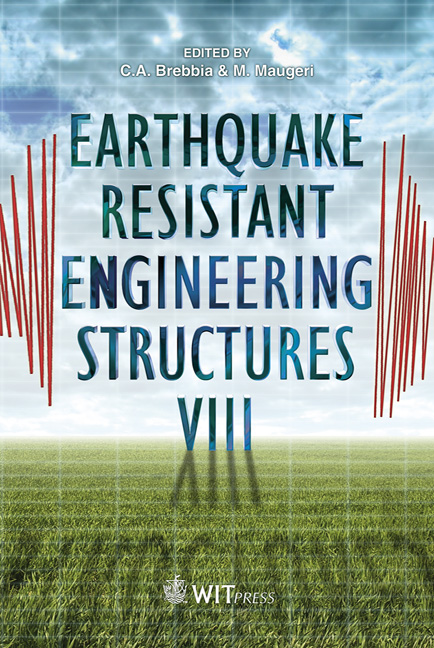Evaluating A Rigid-plastic Method To Estimate The Earthquake Ductility Demand On Structures
Price
Free (open access)
Transaction
Volume
120
Pages
11
Page Range
261 - 271
Published
2011
Size
385 kb
Paper DOI
10.2495/ERES110221
Copyright
WIT Press
Author(s)
M. C. Porcu & G. Carta
Abstract
In order to evaluate the reliability of a rigid-plastic method in estimating the earthquake displacement ductility demand, the present paper applies the method to hundreds of different elastic-plastic oscillators under more than thirty recorded earthquakes. The mean ratio of the predicted value over the exact value of the displacement ductility demand is computed and plotted as a function of the vibration period of the oscillator for different values of the yield acceleration. The results show that, whatever the oscillator and the earthquake, the rigidplastic method leads to a generally conservative estimate of the inelastic displacement demand. Mean errors less than 15% are found both for comparatively short-period oscillators and for comparatively long-period oscillators. For medium-period oscillators, the relative mean error is generally less than 30%, even for very high levels of ductility demand. Some advantages of the rigid-plastic method with respect to other approximate methods are also discussed in the paper. Keywords: earthquake ductility demand, seismic inelastic displacement prediction, rigid-plastic method. 1 Introduction The assessment of the earthquake ductility demand on structures is often carried out by means of approximate methods, most of which are based on the theory of linear elastic oscillators, cf. e.g. Rosemblueth and Herrera [1]; Gulkan and Sozen [2]; Iwan [3]; Kowalsky et al. [4]; Newmark and Hall [5]; Miranda [6]. An alternative method was proposed by Paglietti and Porcu [7] and subsequently improved by Porcu and Carta [8, 9], which predicts the maximum plastic displacement of an elastic-plastic oscillator from that of a rigid-plastic
Keywords
earthquake ductility demand, seismic inelastic displacement prediction, rigid-plastic method





